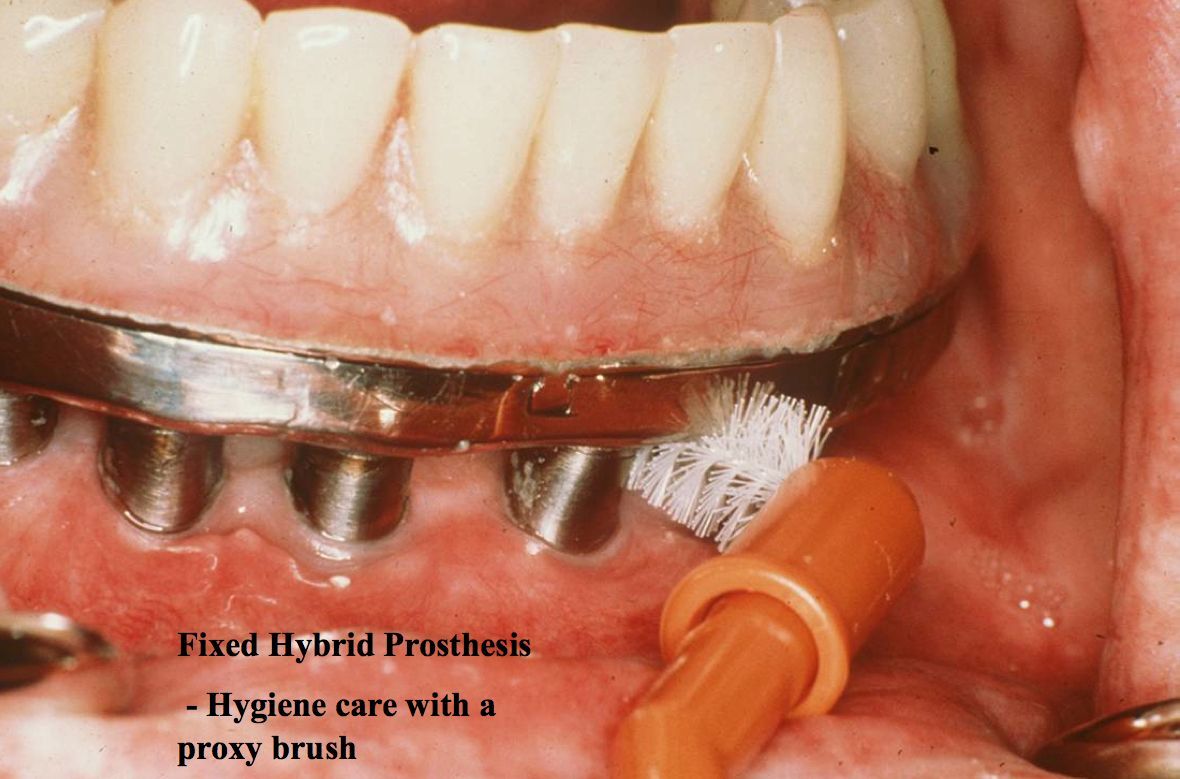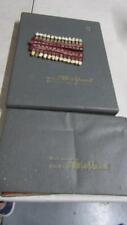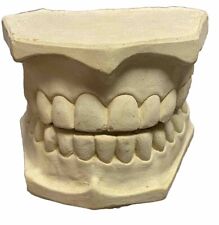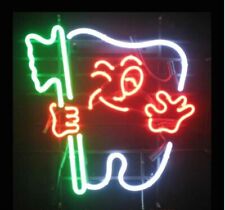Dental Teeth TOOTH IMPLANT MAINTENANCE And REPAIR PowerPoint Presentation on CD For Sale

When you click on links to various merchants on this site and make a purchase, this can result in this site earning a commission. Affiliate programs and affiliations include, but are not limited to, the eBay Partner Network.
Dental Teeth TOOTH IMPLANT MAINTENANCE And REPAIR PowerPoint Presentation on CD :
$12.99
Thank you!
If you do not wish to have your item(s) delivered on data disc(s), I can provide them on a flash drive and other means as well. Just let me know if a disc does not work for you and we can discuss delivery by other methods.
COMBINING SHIPPING COSTS
Are you purchasing multiple items? I will: a) combine all invoices before payment and charge shipping equivalent to one item, or b) refund all shipping costs in excess of one item after payment.
All derivative (i.e. change in media; by compilation) work from this underlying U.S. Government public domain/public release data is COPYRIGHT © GOVPUBS
$3.00 first class shipping in U.S.
Includes the Adobe Acrobat Reader for reading and printing publications.
Numerous illustrations and matrices.
Contains the following key public domain (not copyrighted) U.S. Government publication(s) on one CD-ROM in both Microsoft PowerPoint and Adobe Acrobat PDF file formats:
TITLE: Implant Maintenance and Repair, 62 slides
SLIDE TOPICS, SUBTOPICS and CONTENTS:
Implant Maintenance and Repair
The purpose of this presentation is to provide the basic knowledge to perform proper maintenance and minor repairs to patients that have been restored with dental implants.
Slides 1 thru ## are a basic introduction providing essential information when performing an evaluation on an implant patient.
Slides ## to ## identify the materials and methods to performing proper maintenance check - ups.
Slides ## to ## describe clinical situations that may present themselves. Diagnosis through treatment is emphasized.
Osseointegration
Dynamic process
Healing phase: 0 - 12 months
Remodeling phase: 3 - 18 months
Steady state: 18 months ---
Osseointegration
a dynamic process
Maintenance and Recall
Annually
periapical radiographs should be taken to monitor the crestal bone levels. (crestal bone can be at the level of the first thread in one year with 0.1mm continued loss to approximately 1. 5 mm total bone loss)
remove and reinsert screw retained implant prostheses every 2 years unless indicated otherwise.
Replace prosthesis with new retaining screws if removed.
Cemented restorations are usually permanent (nonretrievable).
Recall focus
Occlusion - verify there are no excursive contacts. Should not hold shimstock. Better to be out of occlusion
Oral hygiene - same requirements as for natural teeth.
Soft tissue health - periodontal probing for evidence of disease.
Screw joint torque - check for loosened screws (most common problem).
Integrity of attachments - applies to overdenture / overpartials.
Stability of implants - must be stable (non mobile) to be successful
Maintenance and Recall
Screw retained prosthesis
Remove prosthetic retention screws
Screw access holes are usually sealed with a layer of cotton pellet, silicone plug or gutta percha the acrylic or composite resin.
Expose the screw by drilling carefully through the resin.
Remove the screw (slot or hex) with the appropriate screw driver.
Throat drapes are highly recommended.
Check for implant mobility and retorque abutments to 20 Ncm. (hand tighten as much as possible with finger abutment driver if no torque control device is available)
Clean and polish abutments (Do not remove)
Reseat restoration using new gold retaining screws.
Tighten screws as if doing nuts on the lugs of an automobile - place all screws back with minimal torque. Then work back and forth across the arch until all are tightened to 10 Ncm. (hand torque with appropriate hand screw driver if no torque controller is available)
Maintenance and Recall
Screw retained prosthesis (cont.)
Temporary reinsertion
fill access holes with small cotton pellet and polyvinylsiloxane impression material or putty.
Long-term reinsertion
fill access hole with small cotton pellet over the head of the screw, followed by warm gutta percha and only 1-2 mm of acrylic or composite resin.
Cemented restorations
Single unit
usually nonretrievable and not removed for maintenance.
Multiple unit (usually not indicated)
carefully tap off with crown remover, check for mobile implants and retorque abutment screws.
Replace restoration with provisional luting media, and recheck occlusion.
Hygiene Aids
Super - floss
End tufted brushes
Proxy brushes
Tarter control dentrifices
Mechanical instruments
Peridex
Soft Tissue Relationship
Similar to teeth
No Sharpeys fibers
Hemidesmosomal attachments
Circumferential and perpendicular connective tissue
Problems in the field
Fractured/loosened screws
Fixture loss
Poor oral hygiene
Soft tissue reactions
Broken attachments
Fractured components
Problems in the field
Fractured/loosened screws
Fixture loss
Poor oral hygiene
Soft tissue reactions
Broken attachments
Fractured components
Fractured or loosened screws
Usually results in localized inflammation, loose restorations and discomfort.
First suspicion when patient complains of discomfort or loose implant.
Prosthetic gold retaining screws have either a slot or hex head.
Abutment screws require a hex abutment driver, large slot, hex or square driver.
Standard and conical (estheticone) abutments have a raised hex and require a wrench that fits over this hex.
All other abutment screws have the slot, hex or square depression inside the screw head.
Loose single tooth abutments are true emergencies. Continued rotation can risk rounding the corners of the hex on the implant, causing a loss in anti-rotation.
Problems in the field
Fractured/loosened screws
Fixture loss
Poor oral hygiene
Soft tissue reactions
Broken attachments
Fractured components
Fixture loss
(Must differentiate between “failing” and “failed”)
Failing Implant
Clinical signs:
progressive bone loss
soft tissue pocketing and crestal bone loss
bleeding on probing with possible purulence
tenderness to percussion or torque forces
Causes:
overheating of bone at the time of surgery or lack of initial stability.
Nonpassive superstructures
inadequate screw joint closure
functional overload
periodontal infection (peri-implantitis)
Fixture loss
Failing Implant
Treatment:
Interim: remove prosthesis and abutments
irrigate with Peridex
ultrasonic and disinfect all components
reinsert assuring proper screw torque
recheck passive fit of framework and occlusion
Failed Implant
Clinical signs:
Mobility
verify fixture mobility by removing any abutments and superstructures first.
A “Dull” percussion sound has been associated with a failed implant
Peri-implant radiolucency can be a radiographic finding
often this is not evident on an X-ray
Fixture loss
Failed Implant
Causes
surgical compromise (overheating bone and initial lack of stability).
Nonpassive superstructures.
Inadequate screw joint closure
Too rapid initial loading
Functional overload
Periodontal infection (“peri-implantitis”)
Treatment
removal of the implant
Problems in the field
Fractured/loosened screws
Fixture loss
Poor oral hygiene
Soft tissue reactions
Broken attachments
Fractured components
Problems in the field
Fractured/loosened screws
Fixture loss
Poor oral hygiene
Soft tissue reactions
Broken attachments
Fractured components
Soft tissue reactions
Often seen with split thickness skin grafts or lack of periabutment keratinized tissue
Soft tissue inflammation most commonly due to loose screw joints.
Remove the offending screws, tighten the abutments and reinsert the prosthesis.
Poor oral hygiene: soft tissue inflammation often referred to “peri-implantitis”. Etiology similar to natural teeth (plaque, lack of attached tissue, etc.) May result in progressive bone loss.
Failing or failed implants.
Problems in the field
Fractured/loosened screws
Fixture loss
Poor oral hygiene
Soft tissue reactions
Broken attachments
Fractured components
Broken Attachments
Plastic bar clip
damaged or broken
cut along long axis with sharp knife and remove.
Missing
replace by inserting a new clip into denture base receptacle
if unavailable, contact Command Implant Coordinator
Metal bar clip
damaged or broken (replacement clip available)
remove the clip and perforate the denture base carefully for intraoral pick up replacement.
Block out under the bar with wax, seat the denture and position a new clip through access in denture base.
Use autopolymerizing acrylic resin with “bead brush” technique to fill in access and connect clip to denture base. Polish , disinfect and deliver.
Always confirm seating of denture after repair and evaluate occlusion.
Broken Attachments
Metal bar clip
Damaged or broken (replacement clip not available)
remove all remnants of the clip from the denture base.
block out under the bar with wax
reline the clip area of the denture with a resilient chairside reline material (viscogel).
Intact clip with no retention
carefully bend the leaves of the clip toward the bar with a thin instrument.
Reseat the denture to confirm increased retention.
Recheck occlusion.
Stud attachments
treatment is similar to clips
tease out “O” ring with an explorer and replace as needed.
Fractured housing can be treated like a clip replacement.
Problems in the field
Fractured/loosened screws
Fixture loss
Poor oral hygiene
Soft tissue reactions
Broken attachments
Fractured components
Fractured components
Screw retained prosthesis
Fractured resin or prosthetic tooth
remove prosthesis and repair as if a conventional prosthesis.
If the prosthesis is a hybrid, remove in the same manner as for a maintenance appointment.
Cemented Prosthesis
Multiple unit restoration
carefully tap off the restoration with crown remover and repair as indicated.
Single unit restoration
if no screw access, drill an access through the occlusal surface to the abutment screw and remove the restoration.
Repair or fabricate provisional as indicated.
On Sep-16-09 at 20:58:44 PDT, seller added the following information:

Related Items:
VINTAGE DENTAL TRUBYTE BIOBLEND & BIOFORM DENTURE TEETH
$119.99
Large Vintage Dental Teeth Impression Molds Plaster Matching Upper Lower
$43.95
Dentist Dental Clinic Teeth Open 20"x16" Neon Light Sign Lamp Bar Wall Decor
$143.00



